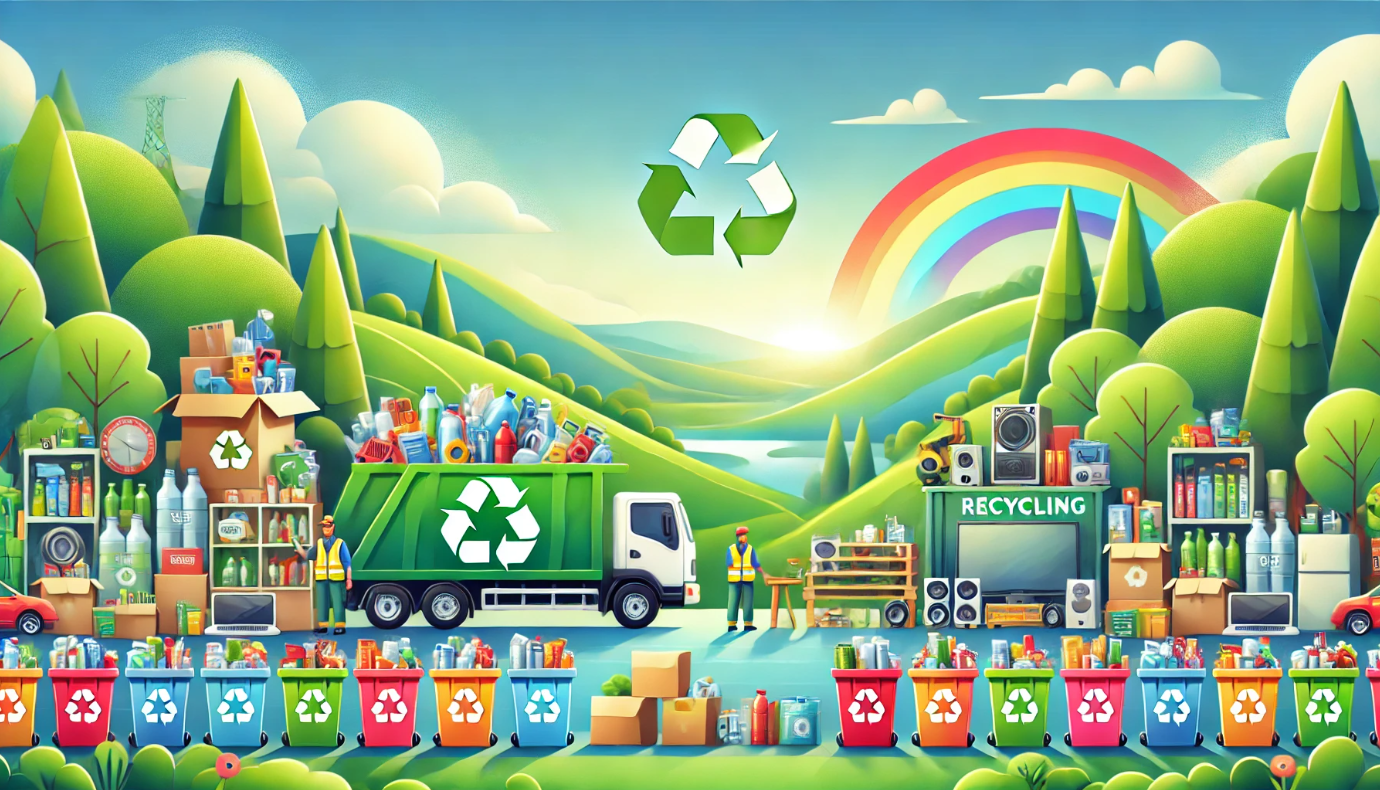
Recycling Unwanted Items: A Guide to Eco-Friendly Disposal
When it’s time to clear out clutter, recycling unwanted items is one of the best ways to give them a new life while reducing landfill waste. From electronics to old furniture, many common household items can be recycled or repurposed. In this guide, we’ll cover how to recycle different types of unwanted items, where to take them, and tips for eco-friendly disposal that supports a sustainable lifestyle.
Why Recycling Matters for the Environment
Recycling plays a critical role in reducing landfill waste and conserving natural resources. Here’s why recycling unwanted items makes a positive impact:
- Reduces Landfill Waste: Recycling helps prevent waste from piling up in landfills, which can pollute soil and groundwater.
- Saves Resources: By recycling materials, we reduce the need for new raw resources, like trees, oil, and metals.
- Lowers Greenhouse Gas Emissions: Manufacturing new products from raw materials uses more energy than recycling.
- Encourages Sustainable Habits: Recycling helps foster a habit of sustainability, reducing overall consumption.
- Supports a Circular Economy: By recycling, materials are kept in use longer, reducing the environmental footprint.
Common Household Items You Can Recycle
Many everyday items that end up in the trash can actually be recycled. Here’s a breakdown of common recyclable items and where they might go:
| Item Type | Examples | Recommended Recycling Method |
|---|---|---|
| Electronics | Phones, laptops, tablets | E-waste recycling centers |
| Furniture | Couches, tables, bed frames | Donation centers, furniture recyclers |
| Appliances | Refrigerators, microwaves, air conditioners | Appliance recycling programs |
| Textiles | Clothes, shoes, linens | Textile recycling bins or donation centers |
| Plastics | Bottles, containers, packaging | Local recycling programs |
- Electronics: Devices like phones and computers contain valuable metals that can be extracted and reused.
- Furniture: Many recycling centers accept large furniture, and donation centers will often take items in good condition.
- Appliances: Large appliances can often be recycled through local waste programs that handle large or hazardous items.
- Textiles: Clothes and fabrics can be donated if in good condition or recycled into new products.
- Plastics: Many household plastics, such as containers and bottles, are recyclable through curbside programs.
How to Prepare Unwanted Items for Recycling
Properly preparing your items for recycling ensures they’re handled efficiently and helps the environment. Here are a few preparation tips:
- Clean and Sort Materials: Remove any food residue or labels from containers, and sort by type where possible.
- Separate Hazardous Parts: For electronics, remove batteries, which often need special disposal.
- Check for Donation Options: Some items, like furniture or clothes, may be better suited for donation if they’re in good condition.
- Avoid Bagging Items: Place recyclables directly into bins without plastic bags, as bags can clog recycling machinery.
- Disassemble Large Items: For furniture or large items, breaking them down can make transportation easier.
Local and National Recycling Programs
Recycling programs vary by location, with both local and national options available to help recycle unwanted items:
- Municipal Recycling Centers: Most cities and towns offer curbside or drop-off recycling options for common household items.
- Retail Take-Back Programs: Stores like Best Buy and Home Depot offer recycling for electronics and batteries.
- E-Waste Collection Events: Many communities host periodic events to collect and recycle old electronics.
- Textile Recycling Bins: Many clothing stores or organizations place bins for recycling clothes and textiles.
- Appliance Recycling Programs: Many local governments offer appliance recycling, sometimes with rebates or incentives.
Examples of National Recycling Programs:
| Program | Items Accepted | Details |
|---|---|---|
| Best Buy | Electronics, appliances | Accepts various electronics in-store, some fees apply |
| Goodwill | Clothing, furniture, electronics | Accepts donations, items sold in stores support programs |
| Home Depot | Batteries, light bulbs | In-store recycling for rechargeable batteries and bulbs |
| TerraCycle | Specialty items | Mail-in recycling for hard-to-recycle items like plastics |
| Call2Recycle | Batteries | National battery recycling program |
Frequently Asked Questions
Q: Can I recycle broken furniture?
Yes, many recycling centers accept broken furniture. However, if it’s in reusable condition, donation centers may take it.
Q: Where can I recycle old electronics safely?
Many electronic stores, such as Best Buy, offer e-waste recycling, and there are dedicated e-waste facilities in most areas.
Q: Are all plastics recyclable?
Not all plastics are recyclable. Check with your local recycling facility, as some types, like plastic bags and certain packaging, may not be accepted curbside.
Q: How can I find recycling events near me?
Local government websites often list recycling events, especially for items like electronics, which may need special handling.
Q: Is there a cost to recycle appliances?
Some programs charge a small fee for large appliances, while others offer free pickup or rebates, depending on your location.

